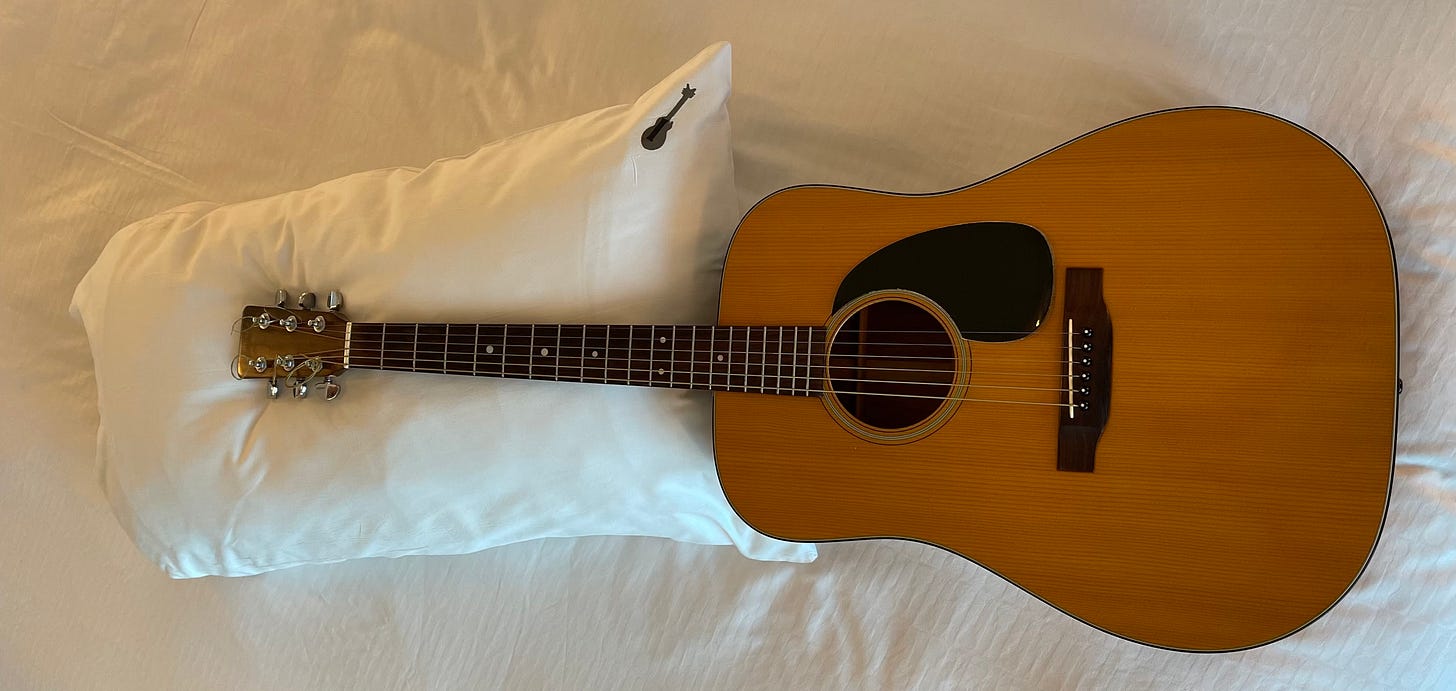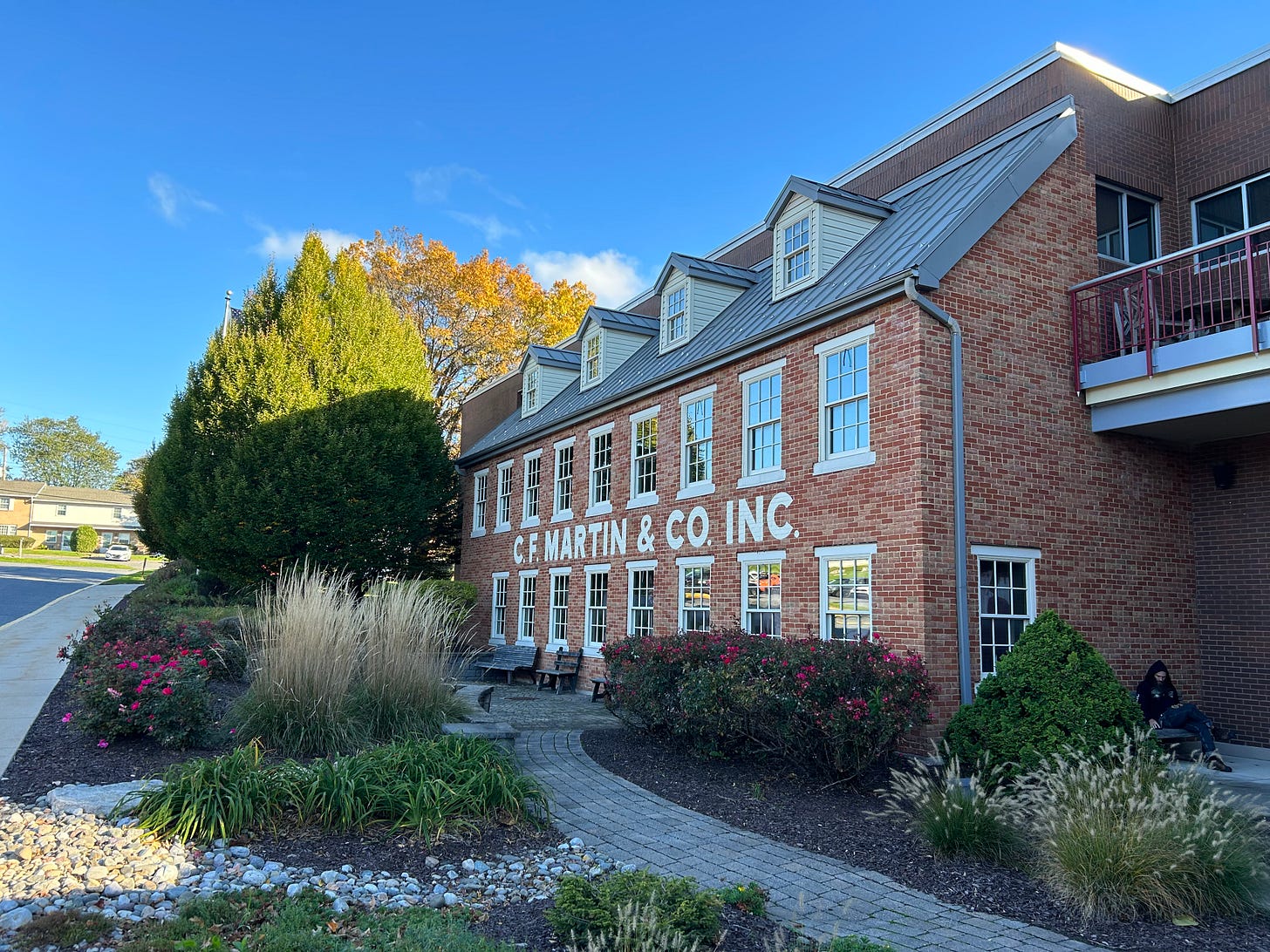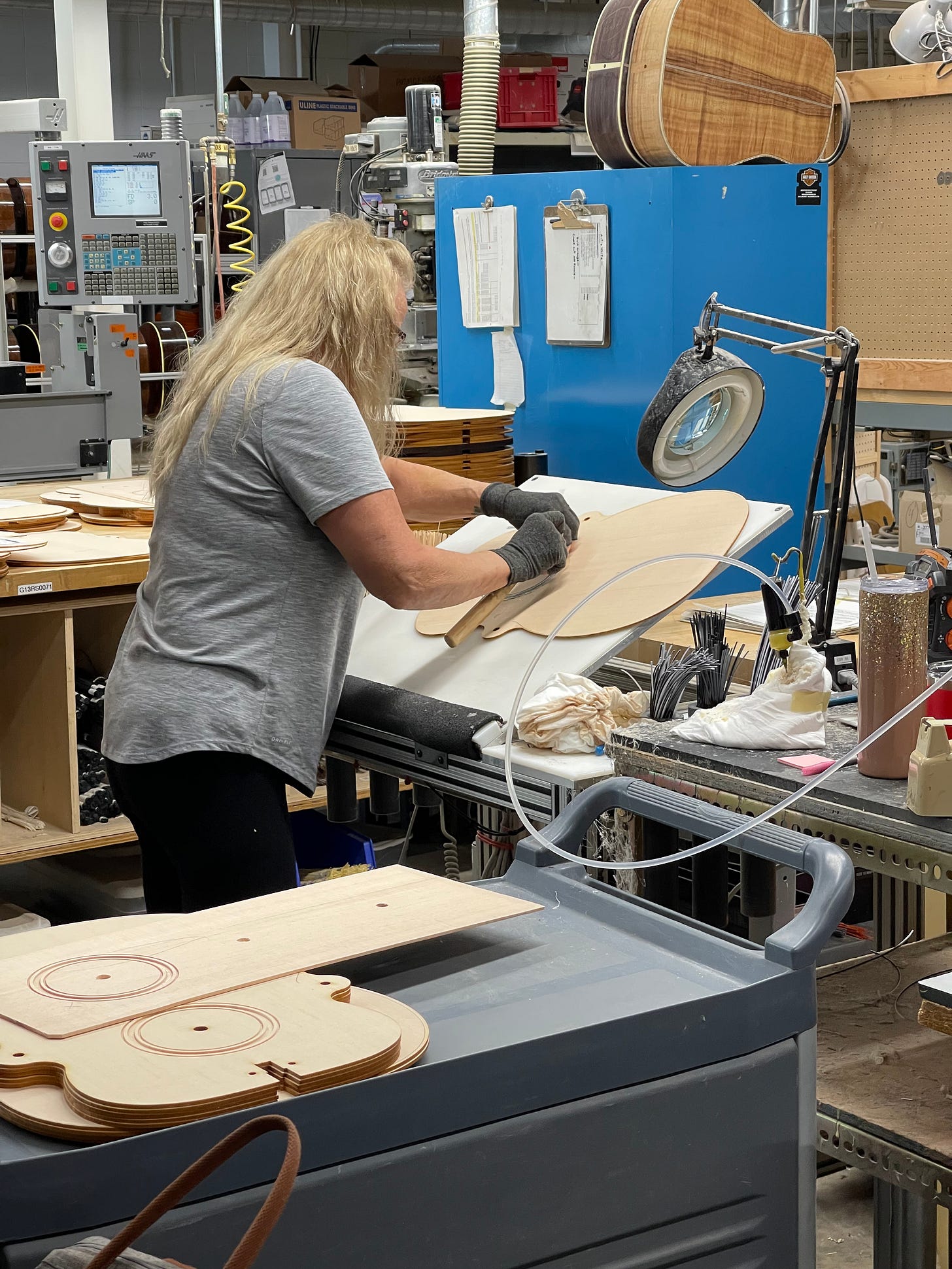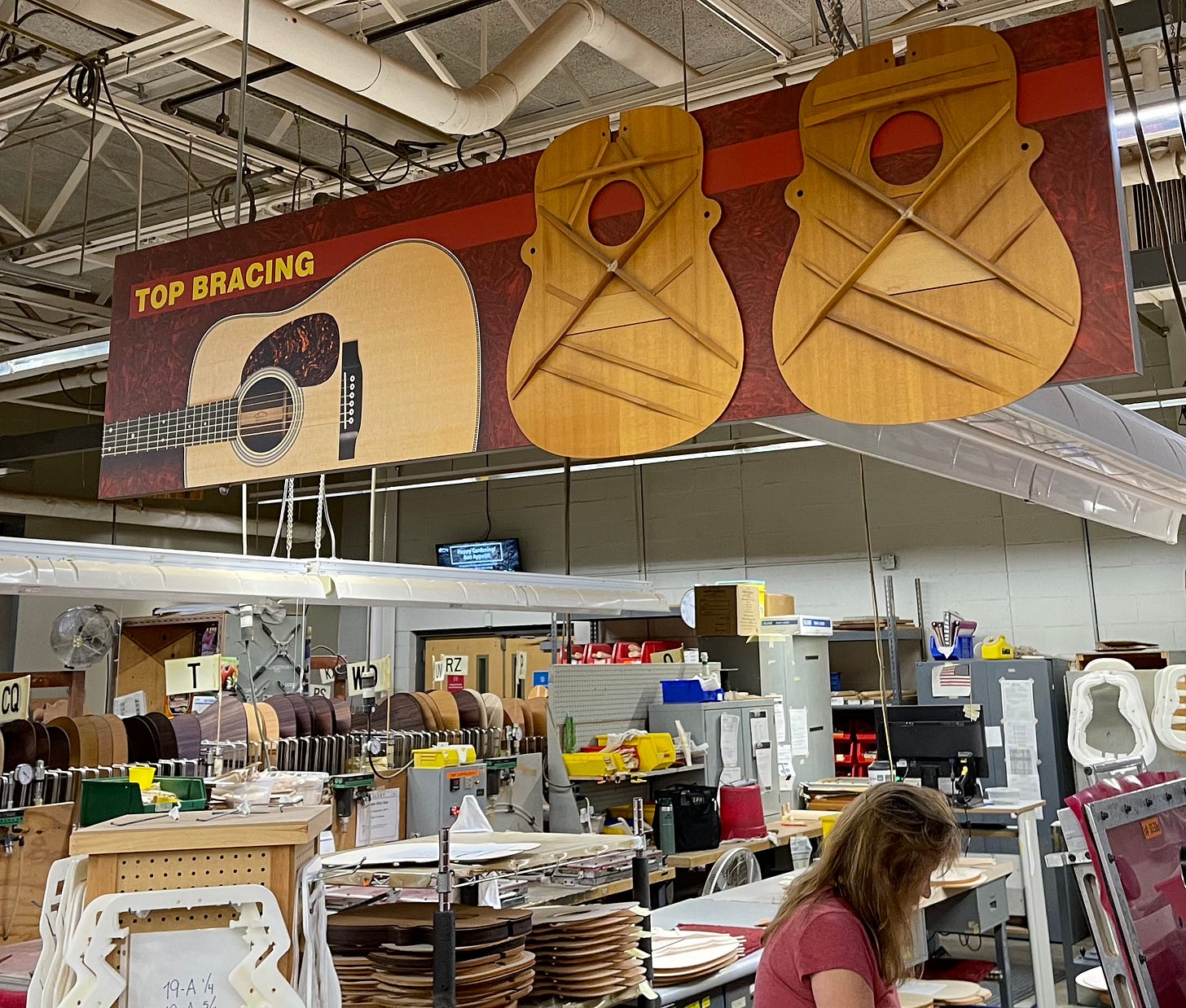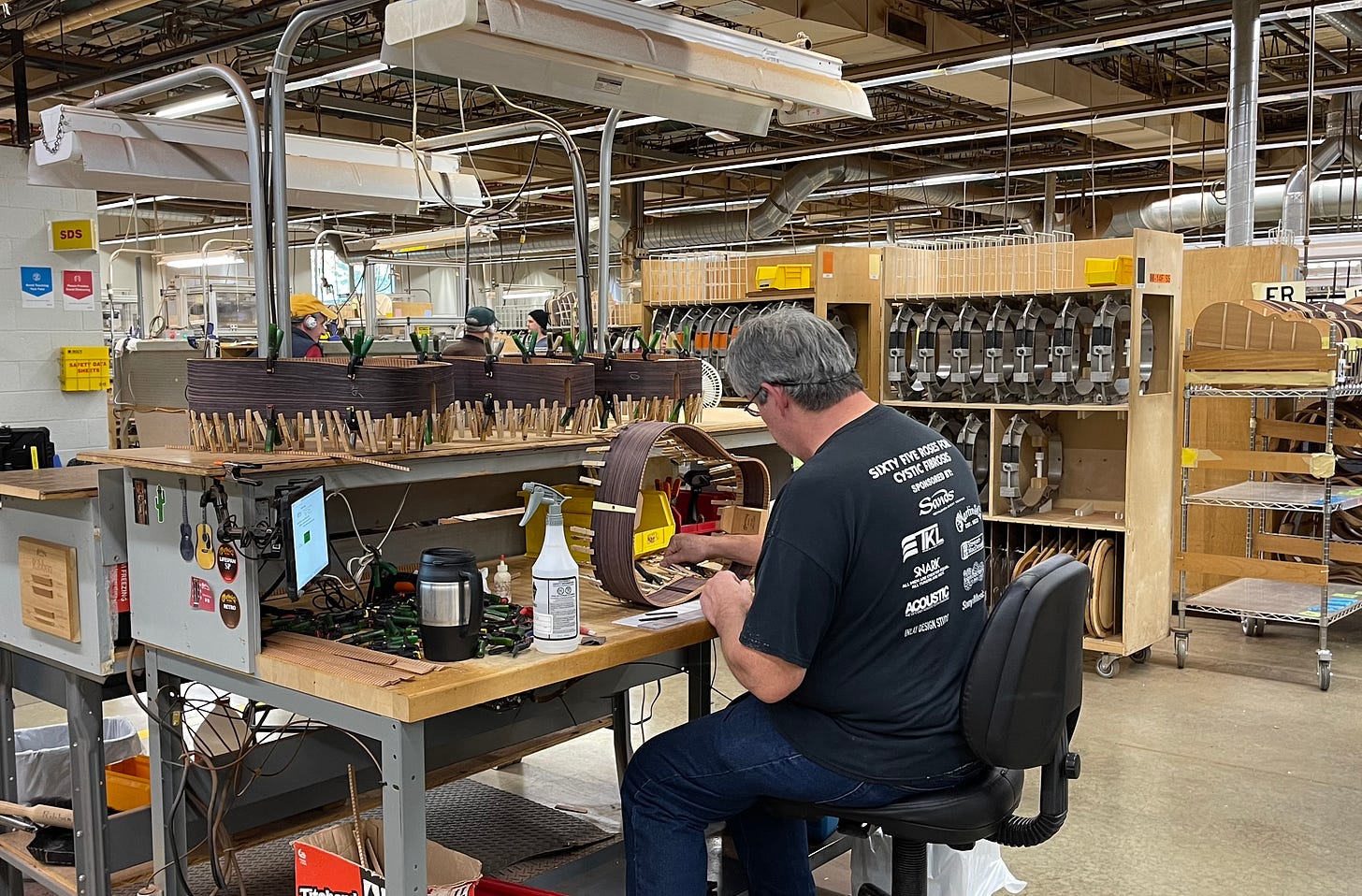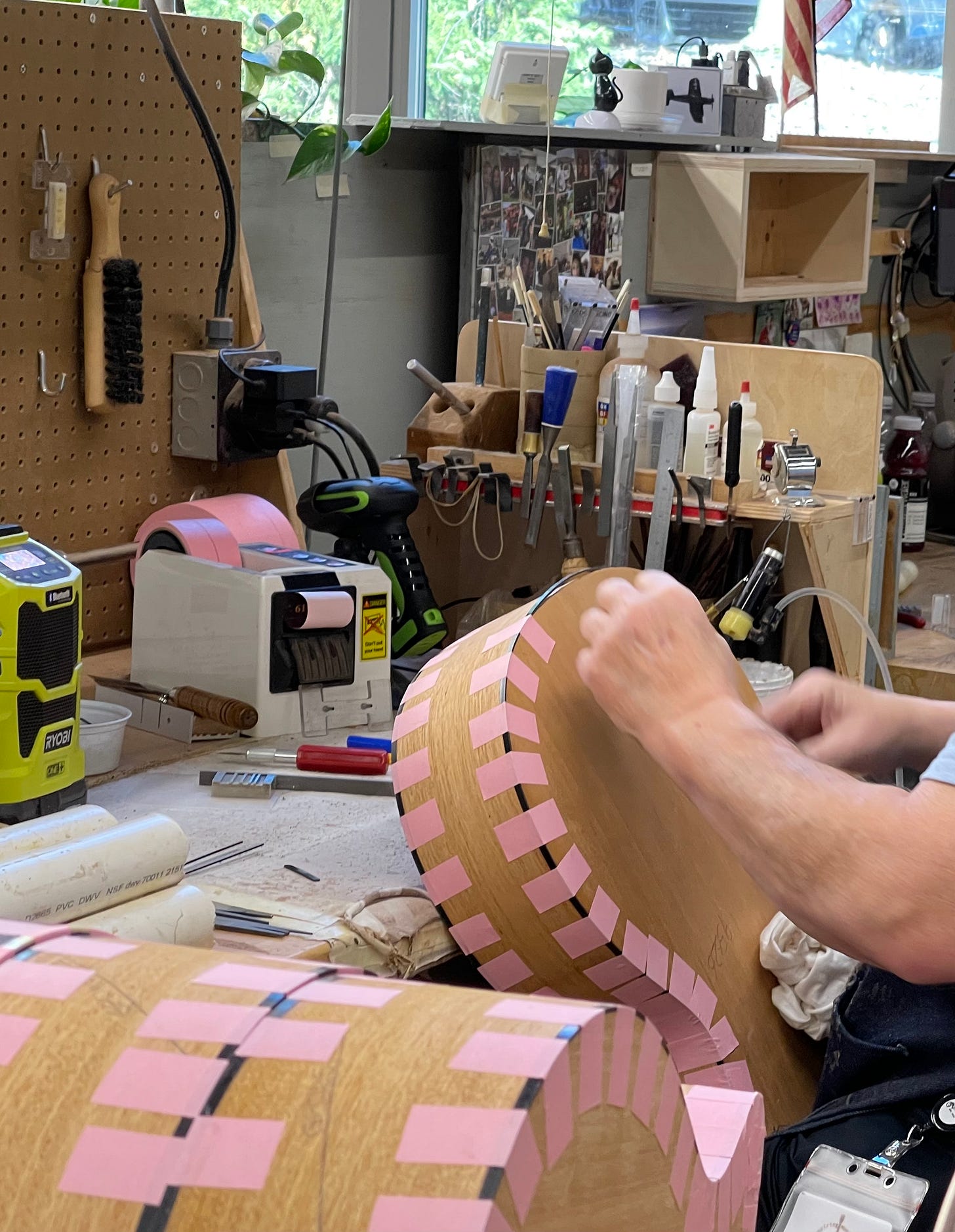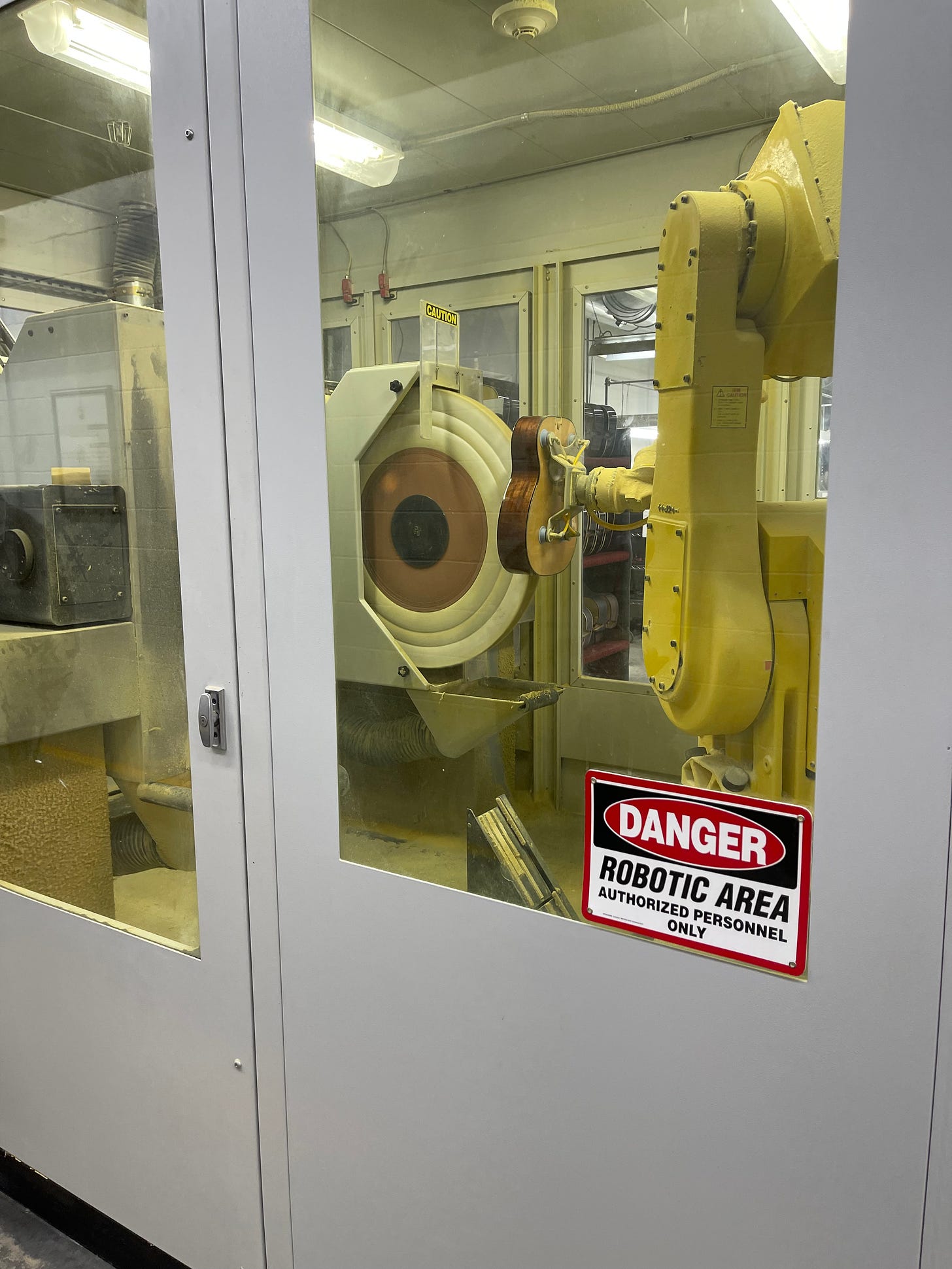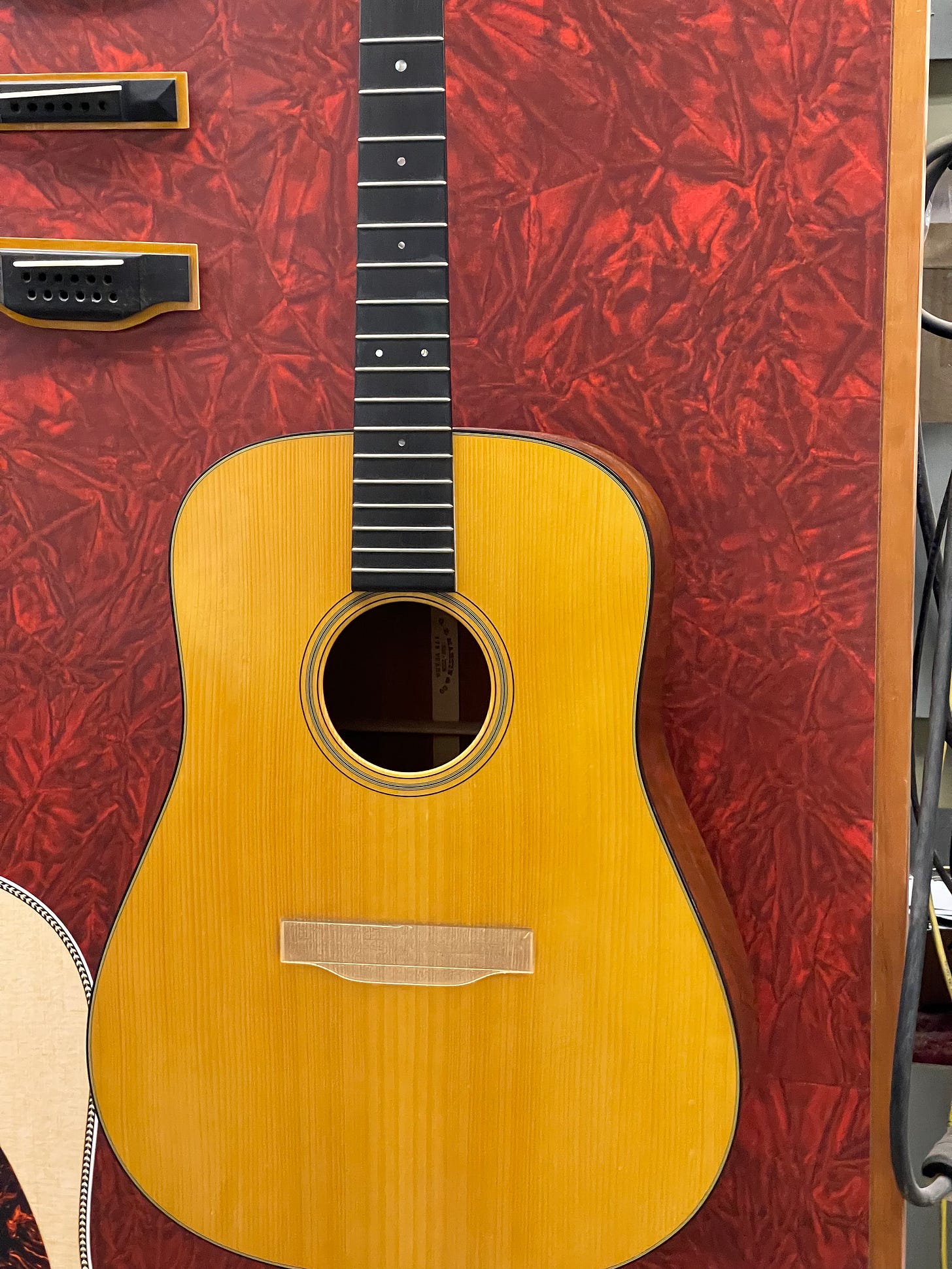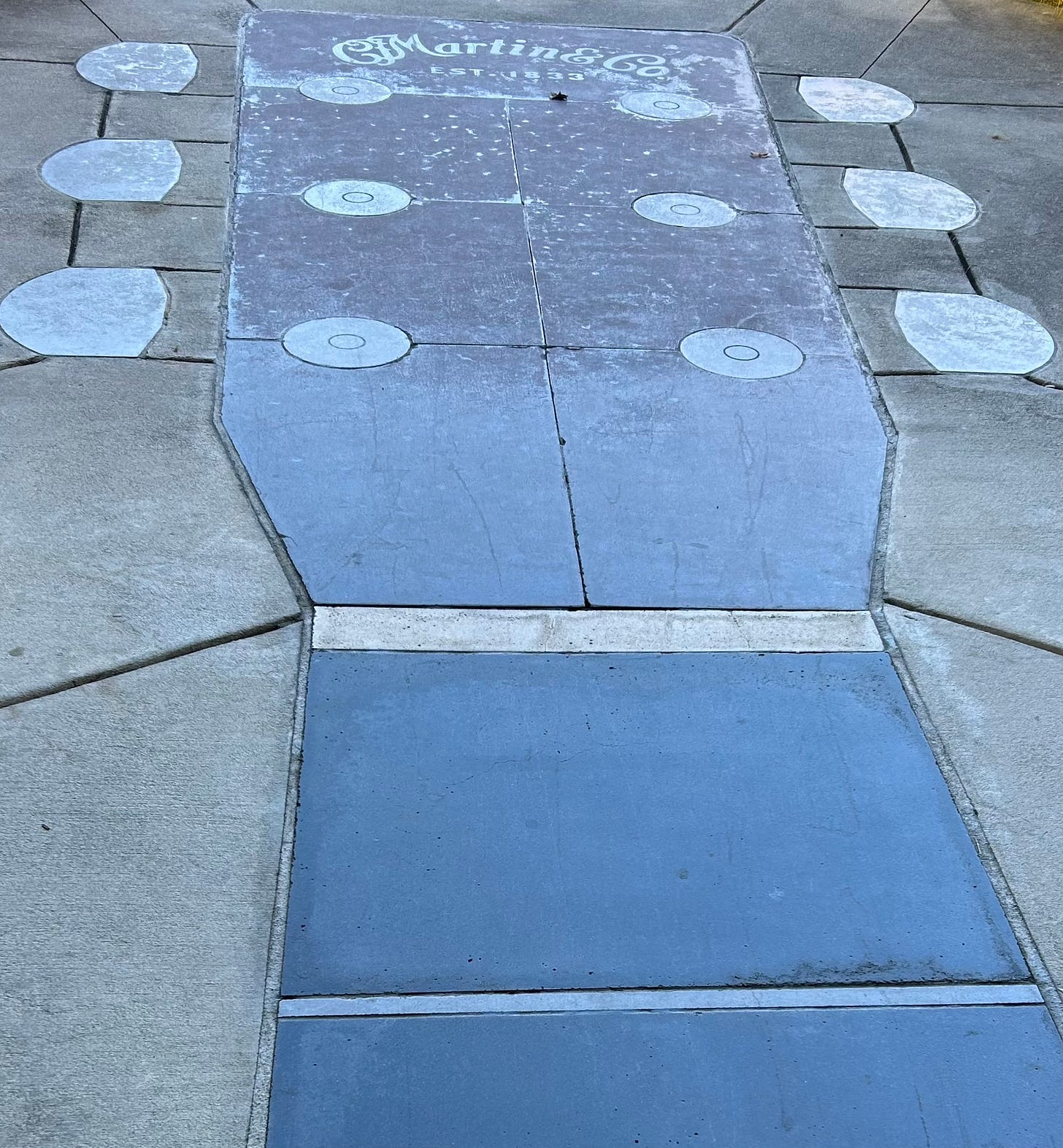Pilgrimages
First to London, then 50 yrs later, to Nazareth
There’s an area in South Eastern Pennsylvania where town names have a biblical ring to them; Bethlehem, Zionsville, Emmaus, and Nazareth. Hold that thought…
In August 1973, I took a bus from Manchester to the Ivor Mairants Music Centre, in Rathbone Place London W1 to pick up a guitar that I had ordered by mail (the old old fashioned paper type) a couple of months before
Ivor Mairaints was the sole UK distributor of Martin guitars at the time
I picked up my guitar, then went to the Royal Festival Hall to see the Kinks play a concert. I checked my new toy into the cloakroom during the show, and then scooted over to Victoria Bus Station to take the night bus back to my home in Manchester
I played the life out of that D-18 for the best part of 10 years as I was famously unsuccessful in my quest to become England’s answer to James Taylor
Fast forward 50 years to October 2023 and I still own that guitar. Here’s a memory that I’ve carried with me for half a century
In 1833, a German craftsman named Christian Frederick Martin moved to New York from Germany. Using the skills he learned back in Europe, CF Martin started a business making stringed instruments, principally mandolins and guitars
Martin moved his workshop to Nazareth, Pennsylvania in 1838 where it remains today. Over the last 190 years, The CF Martin Company has gained a reputation for producing some of the finest guitars in the world
This is a true family business, and through six generation, is now being led by Chris Martin (who is no relation to the Coldplay lead singer who coincidentally has often been seen brandishing a custom Martin guitar). Additionally, many of the craftsman employed in the Nazareth plant today are 2nd and 3rd generation employees
Founder CF Martin Sr developed a new technique to strengthen a guitar’s body and generate a richer tone when he invented X-bracing in the mid-19th century. This revolutionized guitar making at the time, as the company evolved the shape and sound of today’s popular American flat-top acoustic guitar
Between 1915 and 1930, the Frank Henry Martin-led company produced the Dreadnought model, in response to demand from Hawaiian guitarists who needed an instrument with volume that could be heard in live performances. Of course, this was way before microphones and amplification were used
Named after the world’s biggest battleship of the time, the “D” model became a mainstay of the American performing musician. Arguably, the Dreadnought, with its larger and deeper body style, is the most important and influential guitar body ever built
As the proud original owner of that 1972 D-18, the letter I received signed by Frank H Martin III welcoming me as a Martin owner after I registered my purchase has pride of place on the wall of my small home music studio
These guitars have a unique role in American history, and major figures in the history of American music have played Martins, including the father of country music Jimmie Rogers, the singing cowboy Gene Autry, and the king of rock and roll Elvis Presley as well as more recent icons like Bob Dylan, Joni Mitchell, the Beatles and Ed Sherrin
So, on a brisk and chilly weekend in October I found myself in Allentown, just a stone’s throw from Nazareth in Pennsylvania’s Lehigh alley. This was my opportunity for a side trip to the Martin factory
With a flight leaving Allentown on Monday at 12:30pm, the only available 1 hour factory tour was 10:00am. That allowed for 30 mins to get back to the airport, return the rental car and check in for the flight…it would be tight, but I decided to give it a go
Going online I learned that each tour was limited to perhaps 10 people, and only the 10:00am tour on that Monday had availability. Could this be a sign from above telling me to lock in my pilgrimage?
I booked the tour…feeling like one of Geoffrey Chaucer’s 14th century century pilgrims on their journey to Canterbury
The tour was simply amazing
Our guide walked us around the factory, keeping us between the yellow lines on the floor which mark the safe area for visitors. We were shown every stage in the manufacturing process, from raw pieces of wood right through to the finished product
The process starts with the flat piece of (often) spruce which forms the top of the guitar. The blank piece of wood is cut using a laser cutting machine. A sound hole is cut out of the top before it moves on to the next stage. I’ve always wondered “Where do all those holes go?”
The innovative Martin cross bracing is added on the inside of the top…
After the sides are shaped, they are prepared for attaching to the top and back. Despite the manufacturing process using many modern automated techniques, simple clothes pins are used to secure the shaped sides to the internal components as the glue cures to its full bonding strength
Binding is inserted between the finished sides, top and back and glued. Pink tape is used for the same purpose the clothes pegs in the previous stage, namely to ensure that the glue bonds to the components correctly
Sides are stained, the scratch plate is added and a varnish is added to the complete body
The varnished body is polished using a robotic system before the final assembly where the neck is added
The whole manufacturing process takes around 2 weeks for each guitar. The 500,000 square foot Nazareth Factory along with a similarly sized plant in Northern Mexico produce 180,000 complete guitars annually…a far cry from the volumes CF Martin could ever have conceived
For a musician this was a fascinating hour, and as a 50 year Martin owner, I learned so much about the craftsmanship which goes into what is acknowledged as one of the world’s finest stringed musical instruments
As we left, the answer to the eternal question about the sound holes was answered…most of them are recycled, as is much of the wood trimmed from the various components
However, an amazing keepsake is given to everyone who has the privilege of a Martin factory tour. I doubt if Chaucer’s pilgrims had such a keepsake from their journey to Canterbury…
Leaving, I noticed a really nice touch outside the entrance to the factory walking over a larger than life fretted guitar neck set into the paving




